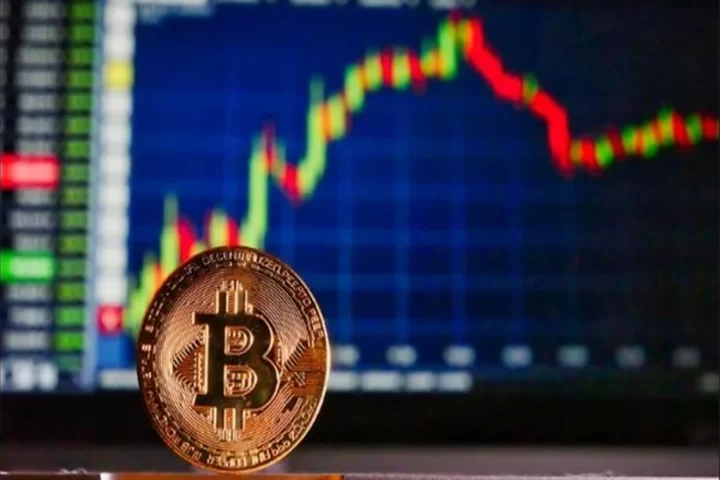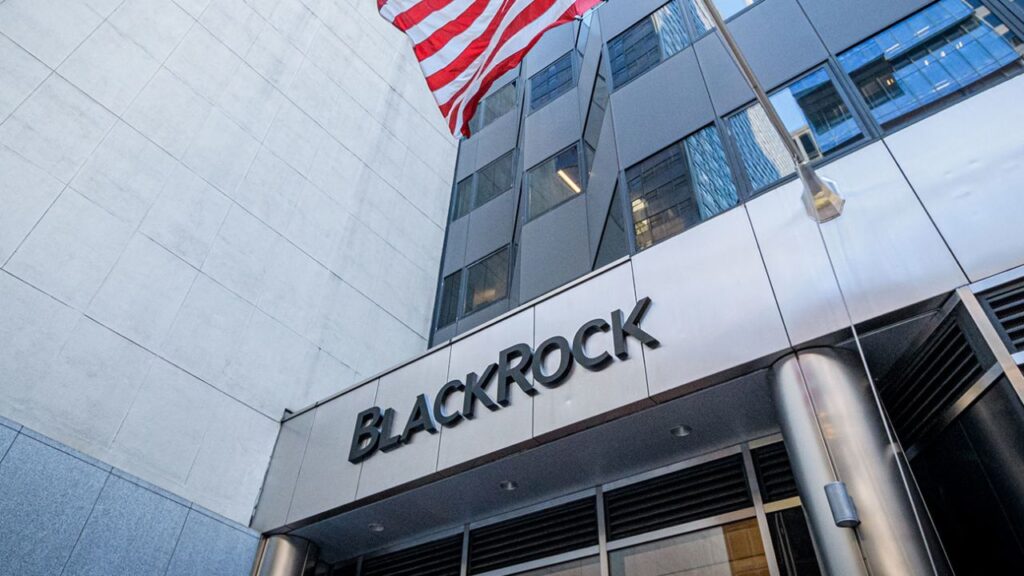BlackRock’s conservative approach to advertising its iShares Bitcoin Trust ETF (IBIT) may prove to be a winning strategy in attracting the affluent baby boomer demographic.
On January 11, BlackRock, a financial juggernaut, unveiled its first video advertisement for IBIT, introducing investors to the concept of Bitcoin and how they can gain exposure to it through the new ETF.
The ad, running for nearly two minutes, features a BlackRock executive calmly explaining Bitcoin’s value proposition and the ease of investing in the ETF.
Jay Jacobs, BlackRock’s US head of thematics and alternative ETFs, highlights IBIT’s accessibility, operational simplicity, and the reputation and expertise BlackRock brings to the ETF space.
Notably, the advertisement steers clear of flashy graphics and complex crypto jargon, setting it apart from other Bitcoin ETF commercials.
Industry commentators have lauded BlackRock’s approach as tailor-made for the well-off baby boomer audience.
READ MORE: Ether Surges Over 20% Against Bitcoin in 72 Hours, Traders Bullish on Further Upside
Eric Balchunas, an ETF analyst at Bloomberg, noted that the ad’s calm demeanor, straightforward message, soothing music, and the absence of a tie on the executive convey a reassuring message: “it’s okay now, the adults are here.”
Chris Dark, founder and managing partner of Fourth Turning Investments, dubbed the ad “so boring it’s brilliant” for its effectiveness in capturing the attention of baby boomers.
Digital asset investor Fred Krueger concurred, asserting that wealthy boomers prefer traditional finance firms like BlackRock and Fidelity over tattoo-covered Gen-Xers advocating for a financial system overhaul.
He indicated that they are now eagerly adding IBIT and FBTC to their portfolios, perceiving it as a Wall Street takeover of the Bitcoin narrative.
The battle for marketing supremacy among Bitcoin ETFs began with Bitwise’s ad release on December 18, 2023.
Shortly after, ETF issuers such as Hashdex and VanEck also unveiled their advertisements. In January, ARK Invest and Grayscale launched new advertising campaigns.
The Valkyrie Bitcoin Fund (BRRR) even advertised on the Nasdaq billboard in Times Square on January 13.
While BlackRock, Fidelity Investments, and others have reportedly showcased their Bitcoin ETFs on their homepages, the deliberate simplicity of BlackRock’s ad campaign appears to have struck a chord with the affluent baby boomer demographic, potentially setting the tone for success in this competitive market.
The United States Government Accountability Office (GAO) recently offered crucial recommendations to the Securities and Exchange Commission (SEC) in anticipation of its approval of a spot Bitcoin exchange-traded fund (ETF) on January 10.
These recommendations primarily revolved around workforce management for the digital asset market and the regulatory approach towards the burgeoning industry in the upcoming years.
The GAO presented these recommendations to the SEC on December 15, and they were made public on January 16.
The GAO’s report advised the SEC to develop a new workforce plan, establish clear policies and procedures for its Strategic Hub for Innovation and Financial Technology (FinHub) internal controls, and formulate performance objectives for the hub.
The GAO, known for its independent and nonpartisan role within the U.S. federal government’s legislative branch, provides auditing, evaluation, and investigative services for the U.S. Congress.
Upon assessing the SEC’s readiness to handle the growing crypto market, the GAO identified that the agency currently employs 116 individuals primarily focused on crypto asset matters.
However, the SEC has yet to create an updated workforce planning strategy, despite the need to align with its fiscal years 2019–2022 strategy.
The GAO suggested that such a strategy would better equip the SEC to address future workforce requirements and effectively fulfill its responsibilities in overseeing and formulating policies related to crypto assets.
READ MORE: Rosario Witnesses Historic First as Tenant Pays Monthly Rent in Bitcoin
Additionally, the GAO observed that while the SEC’s FinHub coordinates oversight of emerging technology, it lacks documented policies, procedures, and performance goals, even though it has established operational processes like meetings with market participants.
In response to their assessment, the GAO issued three recommendations:
- The SEC’s chief should ensure that the chief human capital officer devises a new workforce planning strategy in line with the agency’s 2022–2026 strategic and performance plans.
- The SEC’s chief should ensure that the FinHub director documents policies and procedures that underpin its internal controls.
- The chair of the SEC should ensure that the FinHub director establishes performance goals and metrics that are clear, quantifiable, and targeted.
For each of these recommendations, the GAO included a live status section to monitor whether the SEC takes appropriate actions on them.
In a landmark decision, the SEC granted approval for 11 spot Bitcoin ETF applications on January 10. The internal document shared by the SEC revealed that the proposal received three votes in favor and two against. SEC chief Gary Gensler’s decisive vote marked the approval of the first spot BTC ETFs in the U.S., ending nearly a decade of rejections.
Notably, gold enthusiast and prominent Bitcoin critic Peter Schiff suggested that Gensler was pressured into approving the spot Bitcoin ETFs.
However, Schiff cautioned that Gensler might introduce stringent crypto regulations in the near future, potentially increasing the cost of Bitcoin transactions and undermining its utility, which could lead to a significant price drop.
All the approved spot BTC ETFs commenced public trading the following day, quickly amassing over $2 billion in trading volume on their debut.
BlackRock CEO Larry Fink expressed skepticism regarding the practicality of using Bitcoin for everyday transactions, emphasizing that it should be recognized primarily as an asset class rather than a currency.
During an interview with CNBC on January 11, Fink reiterated his belief in Bitcoin as an alternative form of wealth storage, downplaying its potential to replace national currencies.
Fink stated, “I don’t believe it’s ever going to be a currency. I believe it’s an asset class.” He firmly believes that Bitcoin’s primary role is as a store of value.
However, Fink is more optimistic about the emergence of central bank digital currencies (CBDCs) in the near future.
He foresees the development of digital currencies that leverage blockchain technology, saying, “I think we’re going to create digital currencies, we’re going to use technology for it. We’re going to use a blockchain.”
Recent data from Cointelegraph reveals that over 100 countries are exploring the development of CBDCs, with 39 countries already piloting, testing, or launching CBDC initiatives.
READ MORE: Turkey Gears Up for Cryptocurrency Regulation Overhaul
When asked about ARK Invest CEO Cathie Wood’s Bitcoin valuation predictions, ranging from $600,000 to $1 million, Fink indicated that price speculation wasn’t his primary focus at the moment.
He emphasized his current priority, which is the launch of BlackRock’s newly approved spot Bitcoin exchange-traded fund (ETF), aimed at providing an instrument for storing wealth.
Fink added, “I think if it gets even close to that high, gold will represent even a bigger value. And let’s be clear, if you think it’s digital gold, there’s going to be a reference point between gold and Bitcoin.”
In a separate interview with Fox Business on the same day, Fink highlighted that the approval of the Bitcoin ETF by the United States Securities and Exchange Commission (SEC) signifies the legitimization of the cryptocurrency industry and will enhance safety for investors.
BlackRock’s ETF approval came alongside approvals for 10 other similar products.
Since receiving approval for its Bitcoin ETF, BlackRock has garnered an impressive record of 576 ETF approvals with only one rejection, underscoring its growing influence and prominence in the world of exchange-traded funds.
Asset management firm Vanguard may not be directly offering Bitcoin exchange-traded funds (ETFs) on its platform, but it has a notable connection to the cryptocurrency space through its ownership of a substantial stake in MicroStrategy (MSTR).
As of September 2023, Vanguard Group was found to hold a significant 8.24% ownership stake in MicroStrategy, making it the second-largest institutional shareholder in the company, with a whopping 1,126 million MSTR shares in its portfolio, according to data from Yahoo Finance.
Moreover, MicroStrategy’s stock also features in the holdings of several of Vanguard’s mutual funds, including the Vanguard Total Stock Market Index Fund, Vanguard Small-Cap Index Fund, Vanguard Extended Market Index Fund, and Vanguard Small-Cap Growth Index Fund.
MicroStrategy itself has established a robust connection with Bitcoin, with its balance sheet carrying a substantial exposure to the cryptocurrency.
Over the past years, MicroStrategy and its subsidiaries have accumulated a total of 189,150 BTC, with a collective purchase price of approximately $5.9 billion.
READ MORE: U.S. SEC Approval of Bitcoin ETF Sparks Global Crypto Market Frenzy
This has led some analysts to characterize MicroStrategy as essentially functioning as a leveraged Bitcoin ETF, given the significant impact of Bitcoin on its stock price in 2023.
In contrast, Vanguard has maintained a somewhat distant stance from the cryptocurrency market.
Despite the debut of spot Bitcoin ETFs by several asset managers on major Wall Street exchanges on January 11, Vanguard chose to block the purchase of such products.
They cited a misalignment with their vision and emphasized their focus on traditional asset classes like equities, bonds, and cash, which they consider the foundational components of a well-balanced, long-term investment portfolio.
Nonetheless, Vanguard’s indirect yet substantial exposure to Bitcoin through its MicroStrategy holdings implies that fluctuations in Bitcoin’s price can affect the performance of its mutual funds and the value of its MSTR shares.
For Vanguard clients, this represents an indirect means of gaining exposure to the cryptocurrency through the firm’s investment platform.
In the rapidly evolving crypto landscape, various firms anticipate a surge in Bitcoin-related products in the coming months, including leveraged and short Bitcoin ETFs, as well as crypto loans collateralized by Bitcoin.
In Rosario, the third-largest city in Argentina, a unique rental agreement has been struck between a local landlord and a tenant.
This groundbreaking contract marks the first instance in Argentina where monthly rent will be paid in Bitcoin.
This innovative arrangement was made possible by recent legislative changes implemented by the country’s new presidential administration.
Under the terms of this historic contract, the tenant will be responsible for making monthly payments equivalent to $100 in Bitcoin.
These transactions will be facilitated through Fiwind, a local cryptocurrency platform.
Notably, both parties involved in this contract are experienced cryptocurrency users, signaling a growing acceptance of digital currencies in the region.
The shift towards embracing cryptocurrencies in Argentina can be attributed to the reforms introduced by President Javier Milei, who assumed office after winning the general election in November 2023.
READ MORE: How Playable Ads Are Set to Reinvigorate the Streaming and Digital Content Industry
The nation was grappling with soaring inflation rates, prompting the need for significant changes in vario
us aspects of the legal system, including rental laws.
In December 2023, Diana Mondino, the Minister of Foreign Affairs, International Trade, and Worship, announced a pivotal decree aimed at promoting economic reform and deregulation.
This decree opened the door for the utilization of Bitcoin and other cryptocurrencies within the country, albeit with certain conditions.
One of the notable changes in the regulatory landscape was the government’s efforts to facilitate the legalization of cryptocurrency holdings, even for individuals who were behind on their tax declarations.
A regularization scheme was introduced, allowing taxpayers to declare their cryptocurrency assets with a flat tax rate of 5% if done by the end of March 2024.
This rate would then increase to 10% from April and further to 15% from July until the end of September.
These recent developments signify Argentina’s growing recognition of the potential of cryptocurrencies as a viable means of conducting financial transactions and fostering economic growth.
With this groundbreaking rental agreement in Rosario, the country takes another step towards embracing the digital currency revolution, potentially setting a precedent for similar arrangements in the future.
Ether has surged over 20% against Bitcoin within just 72 hours, and traders are anticipating further upward movement.
Data from Cointelegraph Markets Pro and TradingView reveals that ETH/BTC, which hit yearly lows of 0.0478 on January 9th, has now climbed to 0.0587.
ETH/USD is also experiencing a breakout, reaching levels not seen on the chart since mid-2022.
A bullish divergence on the moving average convergence divergence (MACD) indicator on weekly timeframes against Bitcoin has caught the attention of popular traders.
This week, Ethereum, the largest altcoin, has outperformed Bitcoin in terms of returns, even as Bitcoin celebrates the launch of spot exchange-traded funds (ETFs) in the United States.
Despite BTC/USD reaching its highest levels since the post-ETF announcement in December 2021, Ether’s resurgence seems to overshadow it.
The anticipation of Ethereum’s U.S. ETF debut later in the year has added to the bullish sentiment.
BlackRock’s CEO, Larry Fink, who recently released a Bitcoin ETF, expressed interest in a similar move for Ether, which further fueled optimism around Ethereum.
READ MORE: Turkey Gears Up for Cryptocurrency Regulation Overhaul
“Larry Fink is already beating the Ethereum drum. One day after the Bitcoin launch,” responded trader and analyst Scott Melker, also known as “The Wolf Of All Streets,” on X (formerly Twitter). “The rotation is real.”
Looking ahead, Michaël van de Poppe, founder and CEO of trading firm MNTrading, believes that Ether will continue to gain ground against Bitcoin as part of the overall cryptocurrency market cap.
He suggested that Bitcoin’s dominance appears to have peaked, especially in anticipation of the Bitcoin halving.
“Expecting to see a continuation as Ethereum is taking more momentum.
This might be the cycle’s high on the Dominance as the altcoin bull market has started,” said Van de Poppe.
He also pointed out that attention may shift away from BTC/USD until after the block subsidy halving in April, which is considered a price catalyst, albeit not an immediate one.
Meanwhile, the ETF narrative suggests a potential Bitcoin supply squeeze as institutions seek long-term exposure to BTC.
This factor could further impact the dynamics between Ethereum and Bitcoin in the coming months.
Vanguard’s recent decision to exclude spot Bitcoin exchange-traded funds (ETFs) from its platform has raised concerns among some of its customers, leading them to consider alternative investment avenues.
The move comes as Vanguard emphasizes its commitment to traditional asset classes like equities, bonds, and cash, according to Investing Insider.
Vanguard officially stated that they will not offer spot Bitcoin ETFs for purchase on their platform and have no plans to introduce any Bitcoin or crypto-related products.
This decision is in line with their focus on conventional investment offerings, as they believe these assets are the foundation of a well-balanced, long-term investment portfolio.
Vanguard did not participate in the applications for spot Bitcoin ETFs in 2023, which has prompted investors to explore other platforms.
Tony Spencer, a Vanguard customer, claimed that the company informed him that they are not permitting the purchase of spot Bitcoin ETFs because it contradicts Vanguard’s investment philosophy.
Currently, Vanguard only allows investors to sell Grayscale’s flagship Bitcoin product, which was recently transformed into a spot ETF.
In response to Vanguard’s stance, some customers, including Coinbase’s senior engineering manager Yuga Cohler, are moving their funds to other platforms like Fidelity, which launched one of the ten spot Bitcoin ETFs on January 11.
Cohler expressed dissatisfaction with Vanguard’s decision, stating that it doesn’t align with his investment philosophy.
Neil Jacobs, a Bitcoin commentator, also voiced his disapproval and is in the process of transferring his funds out of Vanguard, describing the decision as a “terrible business decision.”
READ MORE: Congress Calls for Investigation into SEC Following Twitter Account Compromise
The Wall Street Journal reported that customers of investment firms such as Citi, Merrill Lynch, Edward Jones, and UBS faced similar restrictions on purchasing spot Bitcoin ETFs on their respective platforms.
Some of these firms are still evaluating their approach to these products.
UBS is reviewing unsolicited offers from prospective spot Bitcoin ETF investors on a case-by-case basis and is currently making the ETF available only for “aggressive investors.”
Not all approved spot Bitcoin ETFs are available on their platform.
Citi has made a spot Bitcoin ETF available for institutional clients and is considering its adoption for individual wealth clients.
Merrill Lynch is monitoring the efficiency of spot Bitcoin ETF trading before deciding to offer these products to their customers.
In contrast, JPMorgan’s brokerage platform allowed spot Bitcoin ETF trading, with JPMorgan being an authorized participant of BlackRock’s iShares Bitcoin Trust ETF. However, JPMorgan disclosed potential risks to prospective investors considering these trades.
The first day of trading for spot Bitcoin ETFs, following regulatory approval, saw trading volumes exceeding 4.5 billion dollars, primarily driven by BlackRock, Grayscale, and Fidelity’s Bitcoin ETFs.
Additionally, the United States Securities and Exchange Commission approved applications from various ETF issuers, including ARK 21Shares, Invesco Galaxy, VanEck, WisdomTree, Valkyrie, Bitwise, and Franklin Templeton, with Hashdex awaiting S-1 approval.
Following the recent approval by the United States Securities and Exchange Commission (SEC) of spot Bitcoin exchange-traded funds (ETFs), SEC Commissioner Mark Uyeda has expressed significant reservations regarding several aspects of the approval process.
While Uyeda voted in favor of the groundbreaking decision to approve these Bitcoin ETF applications, he voiced concerns about the underlying analytical approach adopted by the commission.
One of Uyeda’s primary concerns revolves around the potential long-term repercussions of the SEC’s reasoning in the approval order.
He worries that the flawed rationale and legal analysis employed in this case may serve as a precedent for future decisions, impacting the crypto industry for years to come.
Uyeda’s foremost objection centers on the SEC’s differentiation between Bitcoin and other commodities.
He believes that Bitcoin should be treated on par with other commodities and criticizes the commission’s use of the “significant size” test as a unique benchmark for spot Bitcoin ETP (exchange-traded product) applications.
According to Uyeda, spot Bitcoin ETPs should have been approved much earlier under this standard, and he questions why they continue to be treated differently than Bitcoin futures ETPs under the “significant market” test.
Although none of the Bitcoin ETF applicants met the SEC’s significant market test, the approval cited “other means” that satisfied the requirements.
Uyeda contends that the SEC’s decision to introduce a new standard after applicants spent years pursuing the significant market requirement was unjust.
He argues that the commission should have communicated its expectations more clearly to applicants, rather than forcing them to make multiple attempts with uncertain criteria.
Furthermore, Uyeda suspects that the SEC’s motivation for expediting the approval of spot Bitcoin ETFs was to gain a competitive advantage.
He points out a lack of analysis concerning how the cash-only creation and redemption feature might prevent fraudulent activities.
He emphasizes the importance of transparency in the analysis and reasoning behind approval orders.
In a somewhat contradictory stance, Uyeda ultimately supports the issuance of the approval order, despite his objections to the legal analysis presented in it.
He cites independent reasons for concluding that the applications met the approval standards outlined in the Exchange Act.
Nonetheless, his critique underscores the need for greater clarity, consistency, and fairness in the SEC’s approach to regulating cryptocurrency-related financial products.
The recent decision by the United States Securities and Exchange Commission (SEC) to approve the country’s first spot Bitcoin exchange-traded funds (ETF) has sent ripples of excitement through both the traditional finance (TradFi) and decentralized finance (DeFi) spaces.
This historic decision has sparked curiosity about its potential impact on the markets and, of course, on the price of Bitcoin itself.
Across the Atlantic in Europe, however, the excitement surrounding a Bitcoin ETF has already somewhat subsided. Europe witnessed the introduction of its first spot Bitcoin ETF on August 15, 2023.
The Jacobi FT Wilshire Bitcoin ETF made its debut on the Euronext Amsterdam stock exchange, more than a year after its originally planned launch.
This pioneering ETF was issued by Jacobi Asset Management, a London-based firm.
What set the Jacobi Bitcoin ETF apart was that it was the first physical-backed Bitcoin fund, offering investors exposure to a financial product backed by actual Bitcoin.
Moreover, it was classified as an “environmental investing” or Article 8 fund, promoting environmental and/or social characteristics.
Grzegorz Drozdz, a market analyst at the European Union-based financial services platform Conotoxia, discussed the market implications of U.S. spot Bitcoin ETFs, particularly from a European perspective.
READ MORE: SEC Renews Warning on FOMO Crypto Investing Ahead of Expected Bitcoin ETF Approvals
He noted that the introduction of Bitcoin ETFs has significantly democratized access to the crypto market, moving beyond traditional cryptocurrency exchanges and wallets.
However, Drozdz pointed out that while Bitcoin ETFs are making waves, their size is still relatively small compared to the overall financial and crypto market.
The total capitalization of the cryptocurrency market stands at $1.78 trillion, and existing investment funds in this sector represent only 2.9% of this total value.
In the European Economic Area, there seems to be a greater openness to institutional investment in cryptocurrencies with the launch of Bitcoin ETFs.
However, Drozdz observed that these funds have not yet generated substantial inflows from institutions in Europe. Market expectations are currently more focused on the potential approval of such instruments in the U.S., which could have a more significant impact on the long-term development of the crypto world.
Despite the uncertainties, Drozdz emphasized the rapid increase in the inflow of new funds into the Bitcoin ETF space, which could potentially signal the start of a new bull market.
Given that Bitcoin still commands a substantial 53.7% share of the market’s capitalization, its success could have a significant ripple effect on the rest of the digital currency market.
This sentiment aligns with the speculations of other analysts and social media communities as they await the SEC’s decision on Bitcoin ETFs.
Bitcoin surged towards its recent high as Wall Street opened its doors on January 11th, as new U.S. macroeconomic data put inflation back on the radar. In the pre-market trading hours, Bitcoin’s price exhibited volatility, primarily hovering around $47,000.
The December Consumer Price Index (CPI) report defied expectations, revealing that inflation was accelerating faster than anticipated.
The month-on-month CPI showed a 0.3% increase, surpassing the expected 0.2%.
Furthermore, on a year-on-year basis, the index rose by 3.4%, exceeding the anticipated 3.2%, according to data from the U.S. Bureau of Labor Statistics.
This data confirmed a larger increase in the all-items index for the 12 months ending in December compared to November.
Although such reports usually trigger fluctuations in risk assets, this time they added to the already existing tension in the cryptocurrency markets.
On January 10th, the first U.S. spot Bitcoin exchange-traded fund (ETF) received approval, and its inaugural trading day was set for January 11th. Pre-market data indicated strong investor interest ahead of the ETF’s debut.
On that day, BTC/USD on Bitstamp briefly surpassed $47,700 but remained within its established range, with $48,000 acting as a resistance level.
READ MORE: SEC Renews Warning on FOMO Crypto Investing Ahead of Expected Bitcoin ETF Approvals
Prominent trader Jelle emphasized that shorting Bitcoin at this point was unwise, predicting an eventual upward acceleration.
Meanwhile, Ethereum outshone Bitcoin, with its 24-hour gains exceeding 10%.
This surge was attributed to traders shifting their focus to Ethereum after the ETF approval, as they didn’t witness the expected pump in Bitcoin’s price.
Crypto Tony, another trader, noted this shift in investor sentiment, driving ETH/USD to reach $2,666 on Bitstamp, its highest level since May 2022.
Other cryptocurrencies, such as Solana’s SOL and XRP, also posted double-digit gains.
In conclusion, Bitcoin’s price rallied as U.S. inflation data surprised investors, while the approval of the first U.S. Bitcoin ETF added to the cryptocurrency market’s anticipation.
Despite the volatility, Bitcoin remained within its established range, and Ethereum stole the spotlight with significant gains.
These developments illustrated the continued interest and resilience of the cryptocurrency market in the face of economic data and regulatory advancements.











